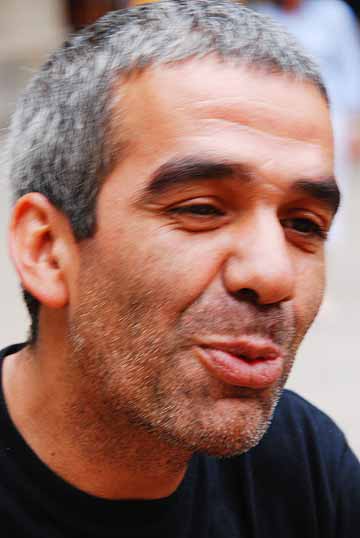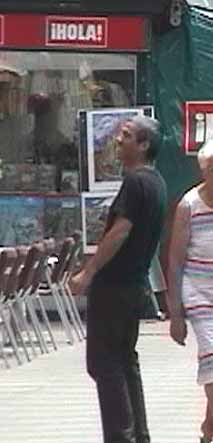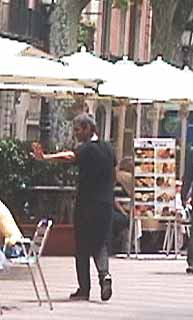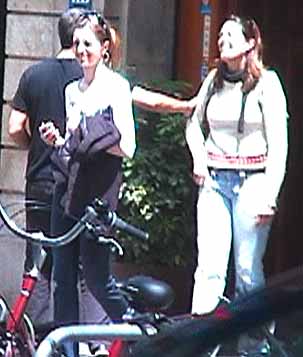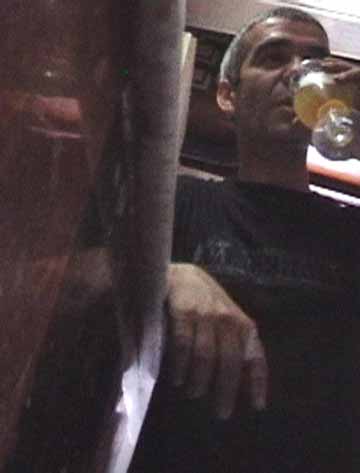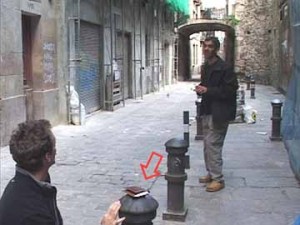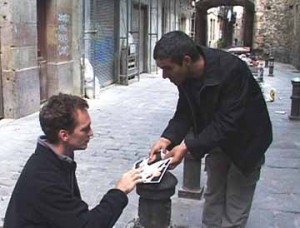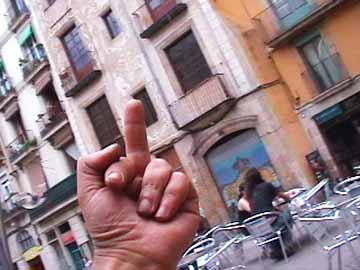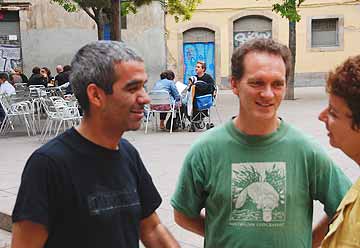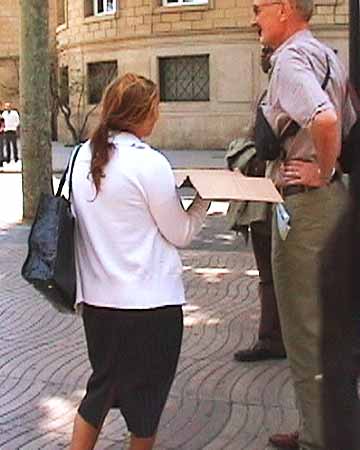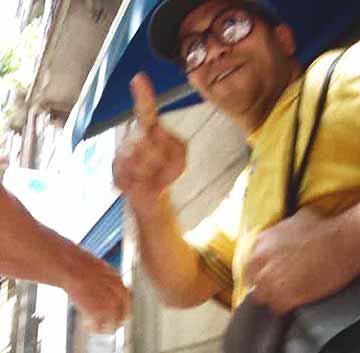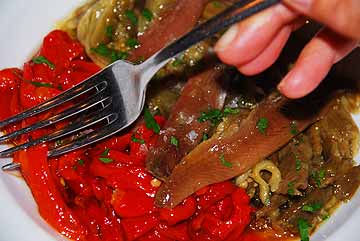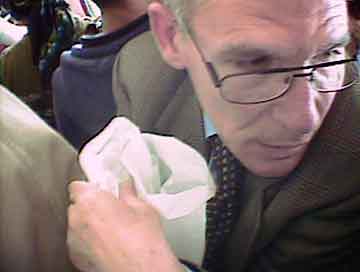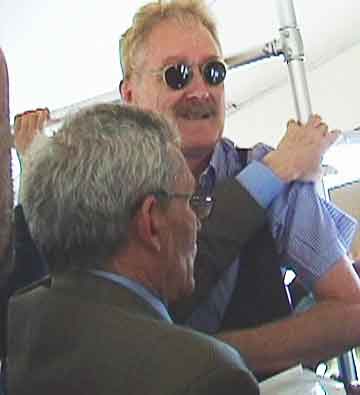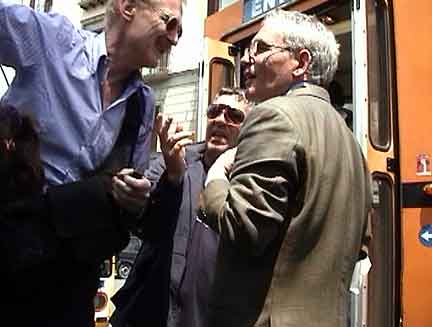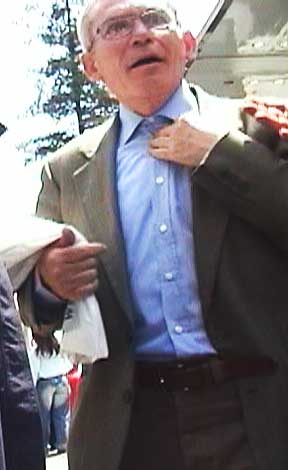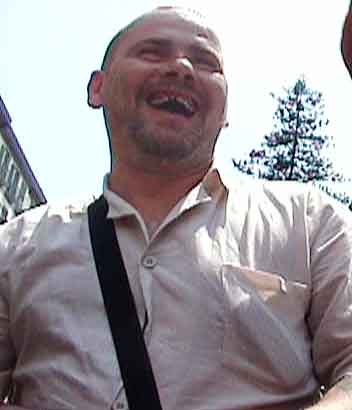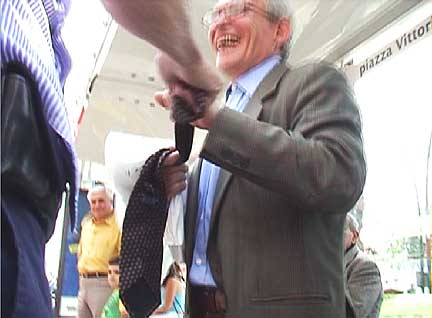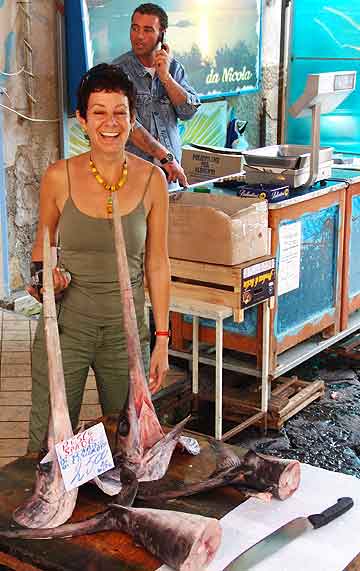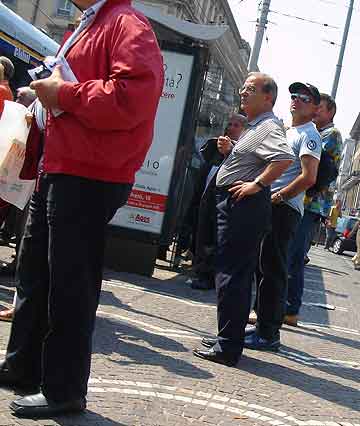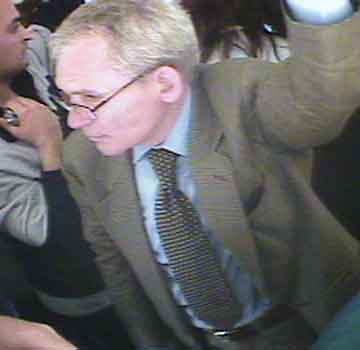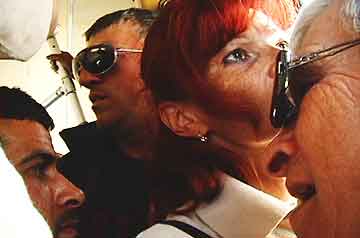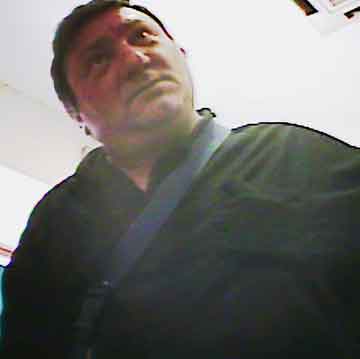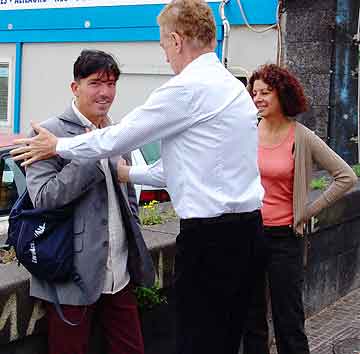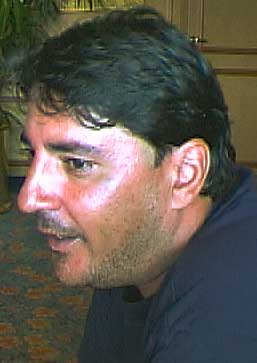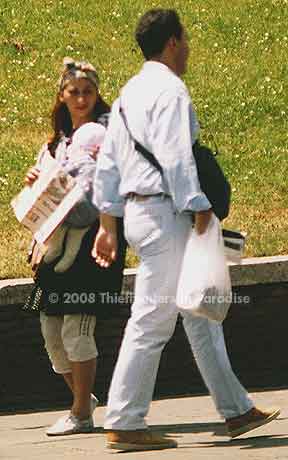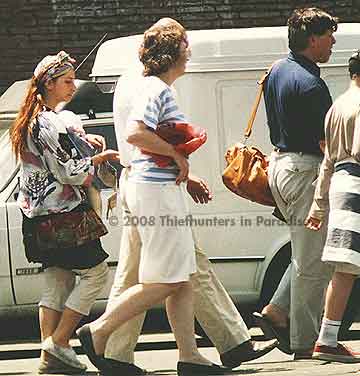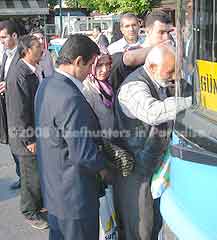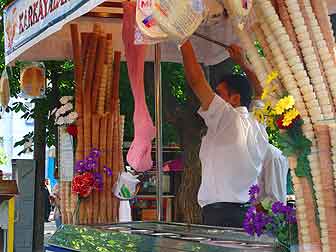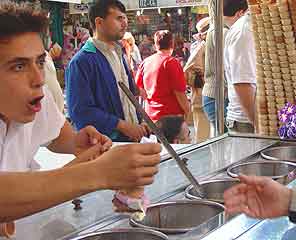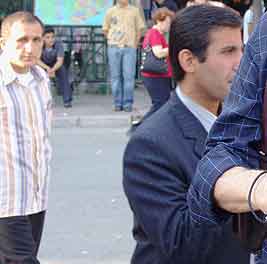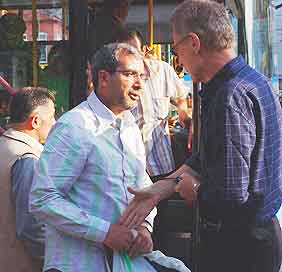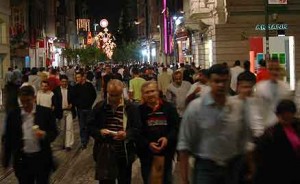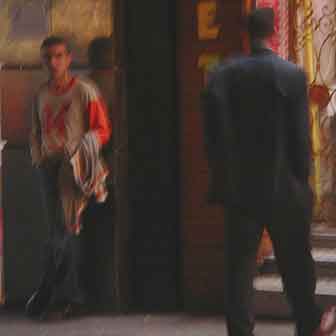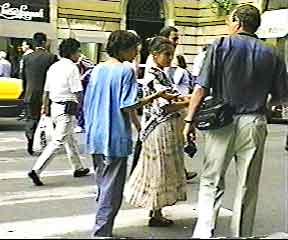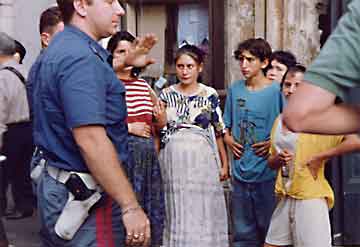
Barcelona, Spain—The Pigeon Poop Pickpocket got me with a double-blob on my back. I felt it ever-so-lightly and knew instantly we’d been accosted by that infamous and elusive thief. A second later, the thief overtook us, smiled, pointed to my back, and said “bird, bird.”
The Pigeon Poop Pickpocket
What luck! Bob and I were ecstatic to see that we recognized the creep. We had met the pigeon poop pickpocket exactly ten years ago, when he squirted my back with fake pigeon poop about ten blocks from this location. His technique was identical, he looked the same and dressed the same, in shorts, with a cap, backpack, and big glasses.

Our excitement impaired our judgment. We should have let the game play out. After all, we were ready for him, with a prop wallet in Bob’s pocket, three hidden video cameras, and two still cameras. Our cash and credit cards were safely stowed in pouches under our clothing. But we remembered how slippery this guy was in June of 1998, that we couldn’t induce him into conversation, that he smiled politely and slowly backed up until he could escape from us.
This time, Bob kept a hand on him in a friendly sort of way and insisted that he talk to us. He didn’t seem to remember us at all. Bob suggested coffee and the thief agreed, leading us to a café a block away. Bob stayed in his face and I had him trapped from behind as we fast-walked and fast-talked. Would he bolt at the intersection? We both noticed that he emptied his goop as we walked. It flew out in big globs as he slyly ditched the evidence. Until he dumped his little squirt-bag, he gestured like a magician: theatrically, as if we wouldn’t notice his tightly clenched fist.
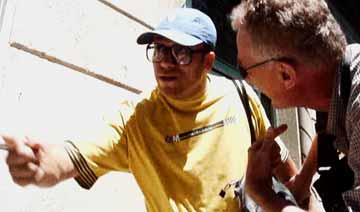
Moments later we were sitting around a little aluminum table outside a restaurant. We ordered cafe solo, he ordered a “bitter.” The waiter gave him a sideways glance. Was he recognized? The waiter said no, when we returned later to ask. The thief told us his name was Manel, but he was in a hurry, he had to go pick up his children. I respected his desire to be on time for his kids, but Bob wanted to talk now. I’m such a sucker. I believed this known criminal, this con artist with the duplicitous smile. Eventually we agreed to meet in our hotel lobby in an hour and a half. “2:30,” he stressed, “not 3:00.” I’m such a sucker. With his big smile, he backed away until he could lope out of site, pointing to his watch and the general direction of our hotel. Just like ten years ago.
We rushed back to the hotel. If nothing else, we needed to put away our tapes for safekeeping. And I needed to change out of my shitty clothes. He won’t show up, Bob said. But we called our trusty translator Terry, our dear friend Terry, who dropped everything to fly all the way across town on his bike. This is a big deal. Terry’s starting up FluidInfo, the tech company of tomorrow according to the elite circle who understand what he’s doing and fund him. He doesn’t really have time to fool with thieves. But he made time, just in case. He won’t show up, Terry said.
Of course the perp didn’t show up.
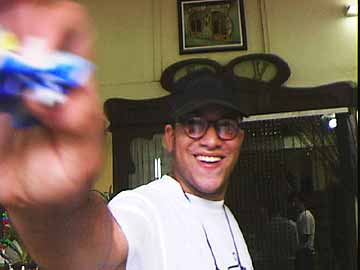
With Terry, we went to the police station to show his photo, again. We did it years ago and he’s still at large, but we wanted to hear what the cops said. Ten years ago the police showed us the three hundred faces in their database, all men who practice la mancha, the stain, or what we call the pigeon poop pickpocket’s ploy. Our man’s mug was not on file then. This visit was unproductive, even a comedy of errors. Predictable, I thought.
The next day we found Kharem approaching marks on La Rambla, and we showed him photos of Manel. No, Kharem said, his name is Miemou. He owns a bar. Bar owners can steal with impunity, Kharem told us, because no one will accuse them. Miemou has a brother also named Kharem, who picks pockets in the Metro. That was Kharem’s story, anyway, which I take with a grain of salt. (I’m not always a sucker.)
The pigeon poop pickpocket’s ploy is this: The perp sneakily throws or squirts something onto your back. Then he politely points out the mess and offers to help you clean it off—while he cleans you out. This is a perfect con. (Con comes from confidence, right?) He plays the good Samaritan. He gains your confidence. He creates a strategy to touch your body wherever he wants to, wherever the disgusting mess supposedly is. A pickpocket can’t steal without touching, right? Why wait for an opportunity? That’s for amateurs. Create one! I call these thieves strategists and they are devious. Look, he makes you grateful to him. He desensitizes you to his touch. And he employs the yuck factor, taking advantage of the truth that bird shit directly triggers the ick region of the brain, a highly effective distraction.
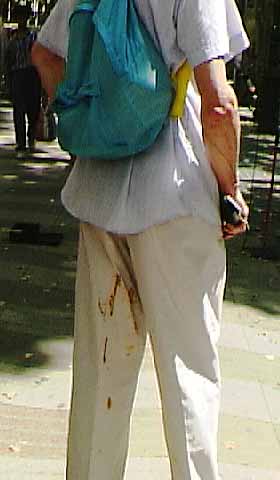
FAQ:
How is the goop applied to the mark?
I begged the pickpocket to show us his tool, both this time and ten years ago. No luck. It seems to be a small plastic bag. I watched his hand like a hawk and never caught a glimpse of the thing. Neither did I find it when I returned to the scene later and searched the pavement. Other practitioners surely have their own inventions. In Las Vegas, we saw a team use the same technique, but one of their members spit into the victim’s hair. And here’s a photo of a victim who was doused with brown goo. Must have used a water pistol.
What is the stuff made of?
I felt that our perp’s formula has changed from ten years ago. Then, it was more a striated mix of blackish and white stuff. This time, it was pure beige. It dried to a soft, waxy cake with a texture similar to cheap chocolate, or white chocolate. I was not a dedicated enough researcher to finger the stuff, smell it, or taste it. It definitely stimulated the ick region of my brain.
Does it wash out?
Mine did. Another perp’s formula might not.
Is this strategy unique to Barcelona?
Not at all. In fact, most of the 300 perpetrators the police had on file were South Americans. The spitters in Las Vegas mentioned above were from South America, too. In New York, the method is identical but the perps squirt ketchup or mustard on the mark near a street-food vendor; hence, the “condiment caper.”
Any other clever twists on the theme?
Some perps dirty their male marks’ jacket. The clean-up process involves removing the jacket, the better to clean it, which gives free and easy access to all pockets, including the difficult-to-reach inside breast pocket.
![]()
This is a follow-up to my recent overview Barcelona Street Crime Today.



